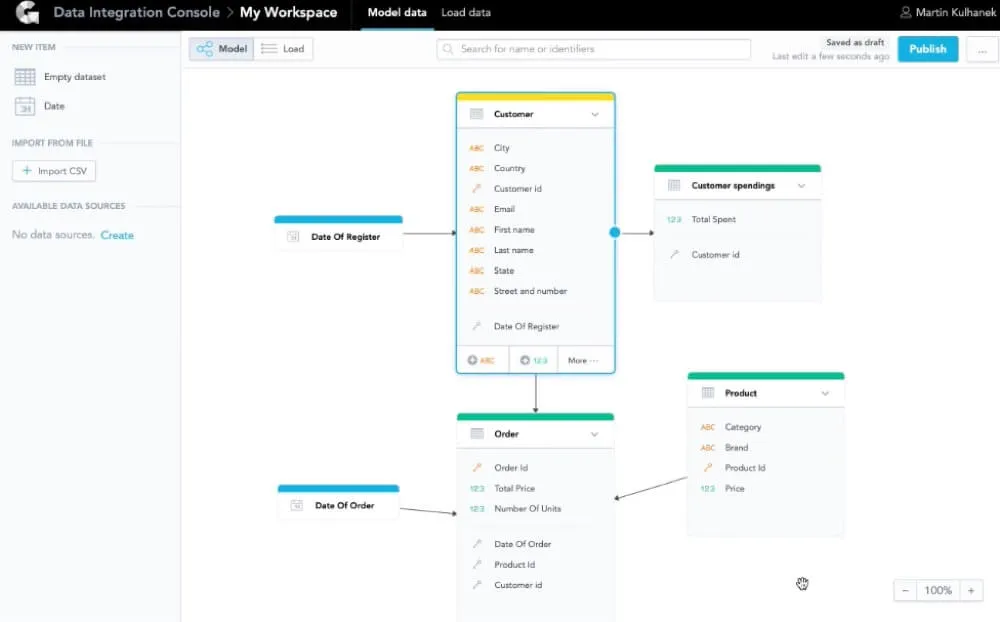9 Questions and Answers From Our Location Insights Webinar


We were recently joined by CleverMaps, the location intelligence platform, to demonstrate how to seamlessly integrate location intelligence into your data stack.
Some of the areas we covered included:
- What location intelligence is and why it’s needed.
- The problems of traditional BI and its reliance on exports and GIS.
- How to successfully create stories with BI and location-based insights.
If you missed the webinar, or want to take another look, you can watch it here.
As with all our webinars, we allocated time for a question and answer session, helping to explore specific topics of interest in more depth. Read on for a list of the top questions and answers surrounding location intelligence and headless BI.
How important is it to achieve real-time when we talk about location insights?
The real-time flow of data completely transforms a user’s workflow. As the user interacts with the frontend, the data they are interacting with, be it creating a location-based insight or customizing a dashboard, is being queried in real time. As a result, end users always have the most up-to-date information at their fingertips, making day-to-day data-driven decisions efficient and accurate.
What embedding options exist for CleverMaps?
With CleverMaps you can embed an array of different visualizations including maps, time series, and graphs into a 3rd party system, web portal, or application. These different visualization assets can be white labeled to match branding.
Why not try our 30-day free trial?
Fully managed, API-first analytics platform. Get instant access — no installation or credit card required.
Get startedAre there any self-service capabilities in the CleverMaps platform?
Yes. You can utilize our wide array of tools to build projects from scratch, or you can build directly from the UI using pre-built metrics. This allows you to change color schemes and the overall appearance in line with your branding as well as customize and share insights by importing and exporting data. A wide collection of pre-built use-case templates also exist for those who wish to get up-and-running quickly and avoid having to build from scratch, unless otherwise desired, helping to streamline the insight-building process.
Does GoodData offer any data visualizations or is GoodData.CN just a layer between analytics and visualizations?
Yes. GoodData.UI, our open-sourced component library, provides a fully extensible framework and a suite of development productivity tools for JavaScript/TypeScript developers. You can take our pre-built components and put them together like bricks, while the GoodData analytics platform takes care of all queries and API calls for you.
What are the benefits of a semantic model, rather than just using SQL?
The semantic model forms an integral part of the GoodData platform, streamlining your data management and translating the complex data structures into easy-to-understand, reusable metrics. These metrics are reusable across dashboards, charts, maps, and more allowing for customization without the requirement for SQL, or any other, technical knowledge. This promotes self-service analytics to end users, regardless of analytics knowledge, and empowers them to customize and create their own metrics and visualizations.
How do you build the semantic model in GoodData?
Building a semantic data model in GoodData.CN revolves around the concept of a logical data model (LDM). You can create and modify the LDM for a particular workspace using our fully integrated LDM Modeler. For step-by-step guidance and best practices on how to build the semantic model, see our GoodData University courses or take a look at our detailed documentation.

Does GoodData use SQL to query the underlying database?
GoodData’s semantic model makes use of its own proprietary MAQL query language, defining the shared relationships between datasets, which, in short, means end users don’t need to have any SQL knowledge, write joins, or remember the names of the primary and foreign key columns. SQL queries are instead generated automatically by the analytical engine.
Can multiple people work on the metrics at the same time when using GoodData?
Yes. The declarative nature of GoodData’s dashboards, metrics, filters, and the semantic data model — in a fully accessible and human-readable configuration — means that multiple people can work with and customize metrics, as well as the other objects, simultaneously.
How can we get CleverMaps and GoodData in a bundle?
The CleverMaps pre-built templates bundle both GoodData and CleverMaps together. Also, as GoodData is embedded into CleverMaps you can get access to all of its different capabilities. In the future, we may also look to explore further bundling options.
Ready to learn more?
If you are interested in GoodData.CN, please contact us. Alternatively, sign up for a trial version of GoodData Cloud: https://www.gooddata.com/trial/
Why not try our 30-day free trial?
Fully managed, API-first analytics platform. Get instant access — no installation or credit card required.
Get started

